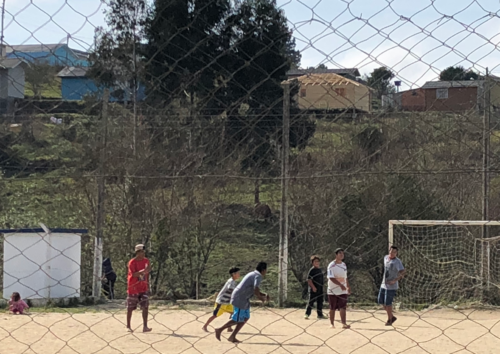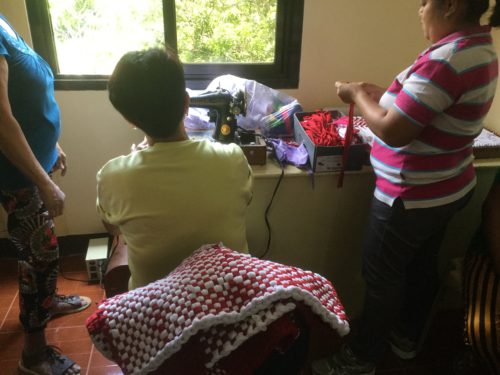Thanks to our new partnership with Kind Traveler, travelers can now help provide basic necessities such as food, clothing, healthcare, and educational support to children living in poverty in the U.S. and abroad when they book hotels through the Kind Traveler website.
Kind Traveler, a Public Benefit Corporation (PBC), is the first socially-conscious “Give + Get” hotel booking platform that empowers travelers to benefit communities, the environment, and animals. Travelers give a donation of $10 per night that they book to a local charity that positively impacts the destination they will visit, or to a charity of their choice on the platform. As a reward for their donation, travelers receive an exclusive rate to use in booking directly with the world’s best hotels and unique properties. One hundred percent of the donations raised on the Kind Traveler platform go directly to charities.

Kind Traveler is committed to giving back to the community.
Tremendous potential
Considering the financial power of the $7 trillion travel industry, this partnership between Children Incorporated and Kind Traveler has tremendous potential for positive global impact. Last year alone, people around the world took more than 1.2 billion trips. Meanwhile, nearly 75 percent of travelers polled in Tourism Cares and Phocuswright’s Good Travels research study believe it is important for their travel dollars to benefit the communities they visit. The study also found that price is the leading reason for booking with a particular travel company. By offering an exclusive rate on hotel stays, Kind Traveler has created a solution that addresses both the consumer’s price motivation and their desire to make a difference.
Another major distinction between Kind Traveler and other travel booking sites is the former’s desire to educate. According to Phocuswright, “Three of ten giving travelers were prompted to volunteer or donate because of something they read, heard, saw or experienced.” Kind Traveler’s blog provides stories that inspire travel while underscoring the importance of giving back, living consciously, and choosing with purpose. By sharing the stories of Children Incorporated’s impact on the planet’s most vulnerable families, Kind Traveler is building awareness of the one in nine people worldwide who will go to bed hungry tonight.
By offering an exclusive rate on hotel stays, Kind Traveler has created a solution that addresses both the consumer’s price motivation and their desire to make a difference.
“Our win-win platform offers solutions for everyone,” said CEO and Co-Founder, Jessica Blotter. “For travelers, they become warriors for good and support hotels that are making a positive impact in the world – while receiving exclusive hotel rates. For hotels, they cultivate new relationships with cause-minded consumers and take another step towards corporate social responsibility. For charities, they receive 100 percent of donations and a new, sustainable channel for fundraising.”
Travelers can now support Children Incorporated when they book Kind Hotels in:
Aspen: Hotel Aspen, Molly Gibson Lodge
Austin: Lone Star Court, Hotel Ella, South Congress Hotel
Baltimore: Hotel Revival
Vancouver: Hotel Loden
Chicago: Hotel Felix, The James Chicago – Magnificent Mile, Virgin Hotels Chicago
Costa Rica: Cala Luna, Casa Chameleon Las Catalinas, Casa Chameleon Mal Pais, Casa Chameleon OCiO Villas
Hawaii: Turtle Bay Resort
Houston: Hotel Sorella CityCentre, Hotel Ylem
Idaho: Hotel Ketchum
Los Angeles: Dream Hollywood, The Hollywood Roosevelt, The Mondrian LA, Hotel Angeleno, Hotel Erwin, Terranea Resort
Mexico and the Caribbean: COMO Parrot Cay (Turks & Caicos), Hotel El Ganzo (San José del Cabo), Ka’ana Resort (Belize), Itz’ana Resort + Residences (Belize), NIZUC (Cancún), The Jamaica Inn (Jamaica)
Miami: Carillon Miami Wellness Resort, COMO Metropolitan Miami Beach, Dream South Beach, The Betsy – South Beach, The Palms Hotel & Spa, 1 Hotel South Beach
Minneapolis: Hewing Hotel
New York City: Arlo Hotel NoMad, Arlo Hotel SoHo, Dream Downtown, Dream Midtown, The Benjamin, The Standard East Village, The Standard High Line
Orange County: Monarch Beach Resort, The Ranch at Laguna Beach, Balboa Bay Resort
Palm Springs: Two Bunch Palms
San Antonio: Hotel Valencia Riverwalk
San Francisco: Hotel G, Hotel Spero, The Mosser Hotel, Kensington Park Hotel
San Jose: Hotel Valencia Santana Row
Tampa: Godfrey Hotel & Cabanas Tampa
Telluride: Lumière Telluride
Virginia: Lansdowne Resort & Spa (Leesburg), Quirk Hotel (Richmond)
Washington, D.C.: The Embassy Row Hotel, Liaison Capitol Hill
Wisconsin: The Charmant Hotel (La Crosse), The Iron Horse Hotel (Milwaukee)
Learn more about how you can #TravelKindly with Children Incorporated and Kind Traveler here.
– Content provided by Kind Traveler CEO and Co-Founder, Jessica Blotter
– Photos courtesy of Kind Traveler





